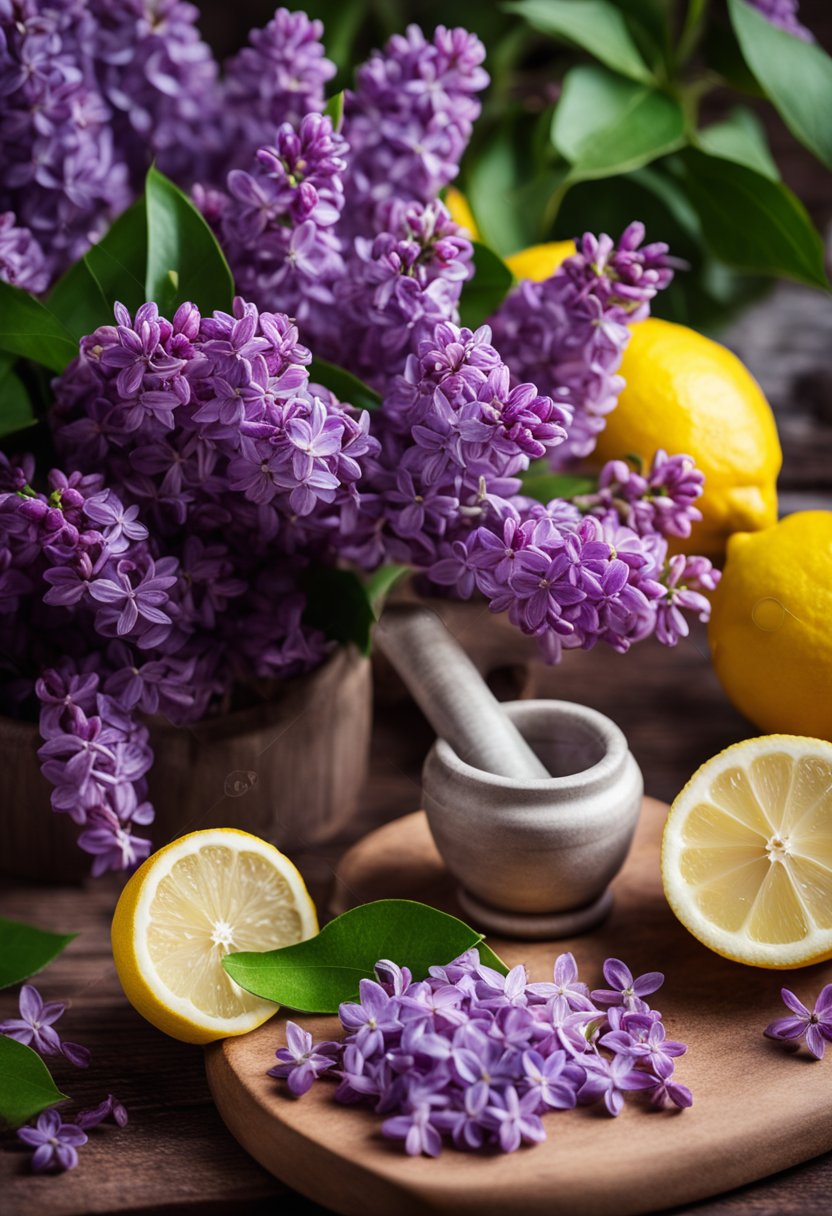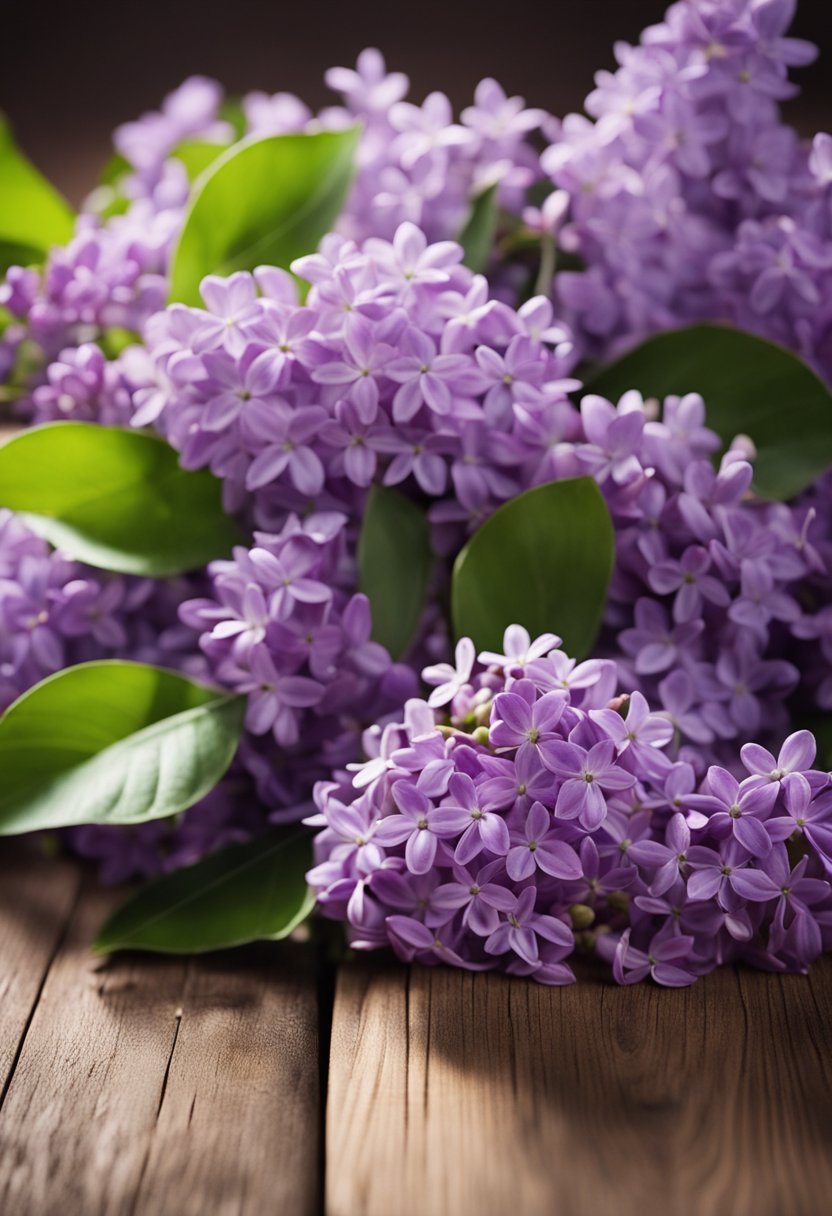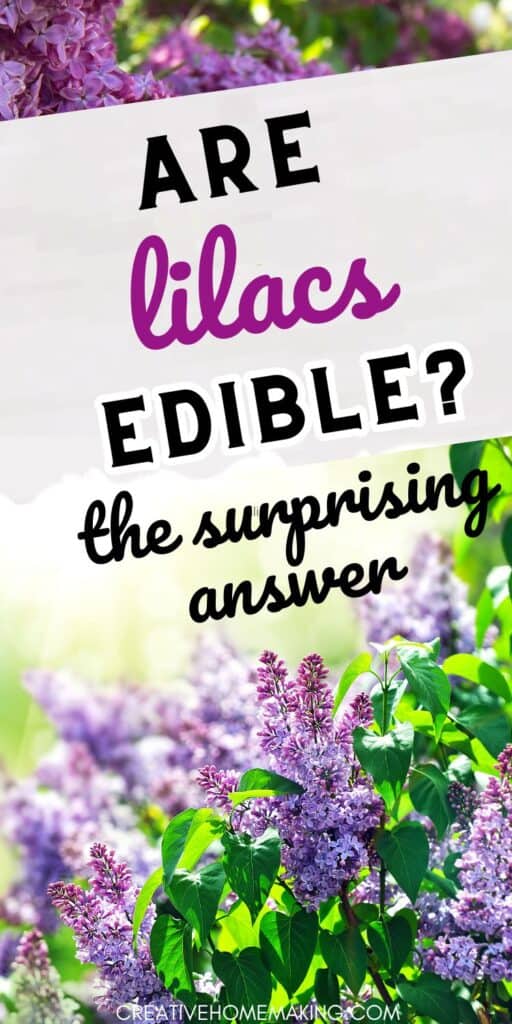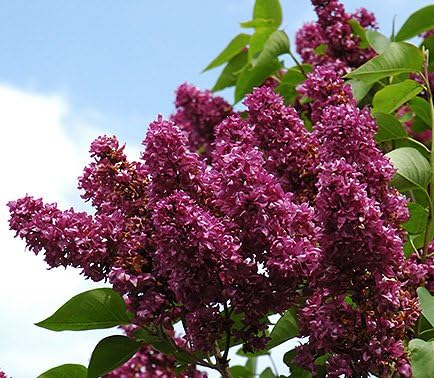Have you ever wondered if lilacs are edible? With their beautiful blooms and sweet scent, it’s natural to be curious about whether or not you can consume them.
This post may contain affiliate links.
While lilacs are not commonly used in cooking, they are indeed edible and have been used for culinary purposes in some cultures.
Lilacs are a popular springtime flower, known for their delicate purple and white petals and intoxicating scent.
Related Article: How to Grow Lilacs from Cuttings: A Beginner’s Guide
They are often used in perfumes, lotions, and other beauty products, but did you know that they can also be used in food?
Lilacs have a sweet, floral flavor that can add a unique touch to desserts, drinks, and even savory dishes.
However, it’s important to note that not all parts of the lilac plant are edible, so it’s crucial to know what parts are safe to consume.
Related Article: Lilacs Not Blooming: Possible Reasons and Solutions
Understanding Lilacs
Lilacs are a popular ornamental plant known for their fragrant and beautiful flowers. But did you know that some people also eat them? In this section, we’ll explore the botanical profile of lilacs and the different varieties and colors available.
Related Article: What to Plant in May: A Guide to Spring Gardening
Botanical Profile
Lilacs belong to the olive family and are scientifically known as Syringa. The most common species is Syringa vulgaris, also known as the common lilac.
Lilacs are deciduous shrubs that can grow up to 20 feet tall. They have heart-shaped leaves and produce clusters of flowers in the spring.
Spectacular Flowering Lilac Charles Joly Potted Plant, Great as a Accent Plant, Starter Plant
Varieties and Colors
Lilacs come in a variety of colors, including pink, white, and deep purple. They can also have single or double blooms. Some popular varieties of lilacs include:
- Sensation: This variety has deep purple flowers with white edges.
- President Grevy: This lilac has double blue flowers.
- Charles Joly: This variety has double magenta flowers.
While all lilacs are edible, some varieties may taste better than others. It’s important to note that lilacs should only be eaten in moderation and in small quantities.
Culinary Uses of Lilacs

Lilacs are not only known for their beauty and fragrance but also for their unique flavor that can be used in various culinary creations. Here are some ways you can incorporate lilacs into your kitchen:
Lilac-Infused Recipes
Infusing lilacs into various recipes is a great way to add a subtle floral note to your dishes. One simple way to infuse lilacs is to steep the blossoms in hot water and use the resulting tea in your recipes.
You can also infuse lilacs into oils, vinegars, and syrups for a more concentrated flavor.
Beverages and Cocktails
Lilacs can add a unique twist to your favorite beverages and cocktails. Lilac syrup can be used to sweeten lemonade, iced tea, or even champagne. You can also add a few lilac blossoms to your favorite gin or vodka cocktail for a floral touch.

Desserts and Baked Goods
Lilacs can be used to add a delicate flavor to desserts and baked goods. Lilac sugar can be used to sweeten cakes, cookies, and even whipped cream. You can also make lilac jelly, which can be used as a spread on toast or as a glaze for meats.
Candied lilac blossoms can be used to decorate cakes and cupcakes, or as a sweet snack on their own. Lilac ice cream is another delicious way to enjoy this unique flavor.
Overall, lilacs can be a fun and creative addition to your culinary repertoire. Just be sure to use only the blossoms, as the rest of the plant is not edible. Happy cooking!
Growing and Harvesting Lilacs
Planting and Care
Lilacs are a low-maintenance plant that can be grown in a variety of soil types. They prefer well-drained soil and full sun, but can tolerate some shade. When planting lilacs, make sure to give them enough space to grow, as they can reach up to 10 feet tall and 6 feet wide.
To care for your lilacs, water them regularly during the summer months, especially during dry spells. Fertilize them once a year in the spring with a balanced fertilizer. Prune your lilacs after they bloom to maintain their shape and encourage steady bloom in the following years.
Best Time to Harvest
Lilacs are typically harvested in the late spring or early summer when they are in full bloom. Cut the flowers in the morning when they are at their freshest and most fragrant. Use clean, sharp shears to make a clean cut at a 45-degree angle.
Late-season lilacs can also be harvested in the fall, after the first frost. These lilacs have a different scent and are often used in potpourri and other fragrant products.
In northern states and southeastern Europe, lilacs are also foraged in the wild. Make sure to obtain permission before harvesting on private property.
Health and Safety Considerations
Edible Parts of the Plant
Lilacs are known for their beautiful flowers and sweet fragrance. However, not all parts of the plant are edible. The flowers and leaves of the lilac plant are edible, but the stems and bark are not.
The flowers can be used in salads, syrups, and desserts, while the leaves can be used in teas and as a seasoning.
Potential Risks
Before consuming any part of the lilac plant, it’s important to consider potential risks. Lilacs may be treated with pesticides, which can be harmful if ingested. It’s important to wash the flowers and leaves thoroughly before consuming them.
Additionally, lilacs have an astringent taste and can cause upset stomachs if consumed in large quantities.
While lilacs have been used for medicinal purposes in the past, it’s important to note that there are no proven medicinal benefits of consuming lilacs.
Some chemicals found in lilacs have been shown to have anti-inflammatory and anti-cancer properties, but more research is needed to determine their effectiveness.
Bugs and debris can also be a concern when consuming lilacs. Be sure to inspect the flowers and leaves carefully before consuming them. If you have any concerns about the safety of consuming lilacs, it’s best to avoid them altogether.
Frequently Asked Questions
Can you eat lilacs safely?
Yes, you can eat lilacs safely. However, it is important to note that not all parts of the lilac plant are edible. The flowers and leaves of the common lilac (Syringa vulgaris) are safe to eat, but the stems, bark, and roots are not.
It is also important to make sure that the lilacs you are consuming have not been treated with pesticides or other chemicals.
What are the medicinal benefits of lilacs?
Lilacs have been used for medicinal purposes for centuries. They are believed to have anti-inflammatory, anti-bacterial, and anti-viral properties. Lilacs have also been used to treat digestive issues, headaches, and skin conditions.
However, more research is needed to fully understand the potential medicinal benefits of lilacs.
What recipes can you make with lilacs?
Lilacs can be used in a variety of recipes, including salads, teas, and baked goods. Lilac flowers can be used to add a floral flavor to dishes, while the leaves can be used as a substitute for bay leaves. Lilac syrup can also be made by boiling lilac flowers with sugar and water.
Are there any toxic varieties of lilacs?
While most lilacs are safe to eat, there are some varieties that are toxic. The Japanese tree lilac (Syringa reticulata) and the Chinese lilac (Syringa x chinensis) are not safe to eat. It is important to properly identify the variety of lilac before consuming it.
How can you incorporate lilacs into your diet?
Lilacs can be used in a variety of ways in the kitchen. You can add lilac flowers to salads, use them to flavor tea, or infuse them into honey or vinegar.
Lilac leaves can be used in place of bay leaves in soups and stews. Lilac syrup can be used to sweeten cocktails or drizzled over pancakes or ice cream.
What is the flavor profile of edible lilacs?
Edible lilacs have a sweet, floral flavor with hints of citrus. The flavor can vary depending on the variety of lilac and how it is prepared. When using lilacs in cooking, it is important to use them sparingly to avoid overpowering other flavors in the dish.
Follow my lilacs board on Pinterest.




